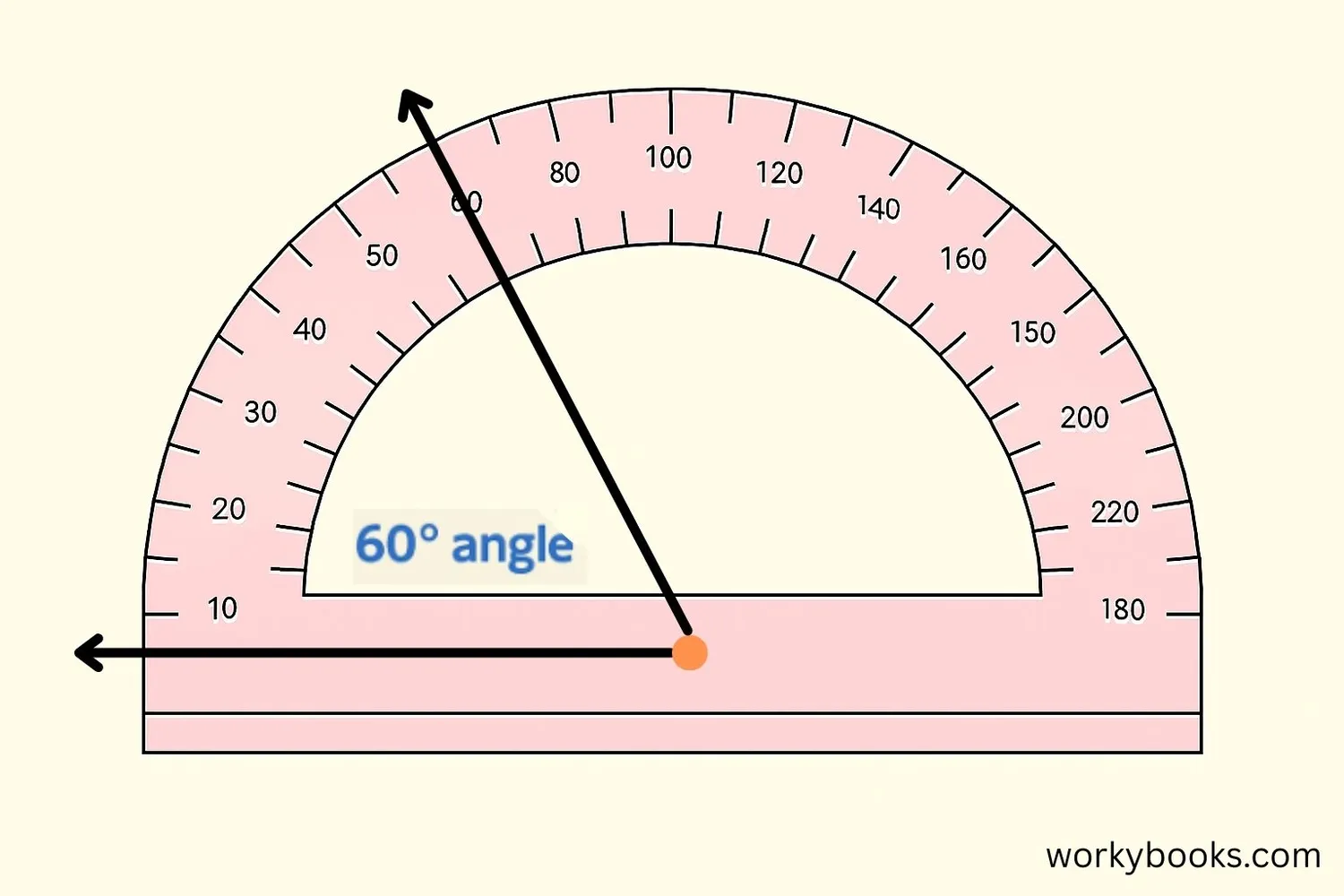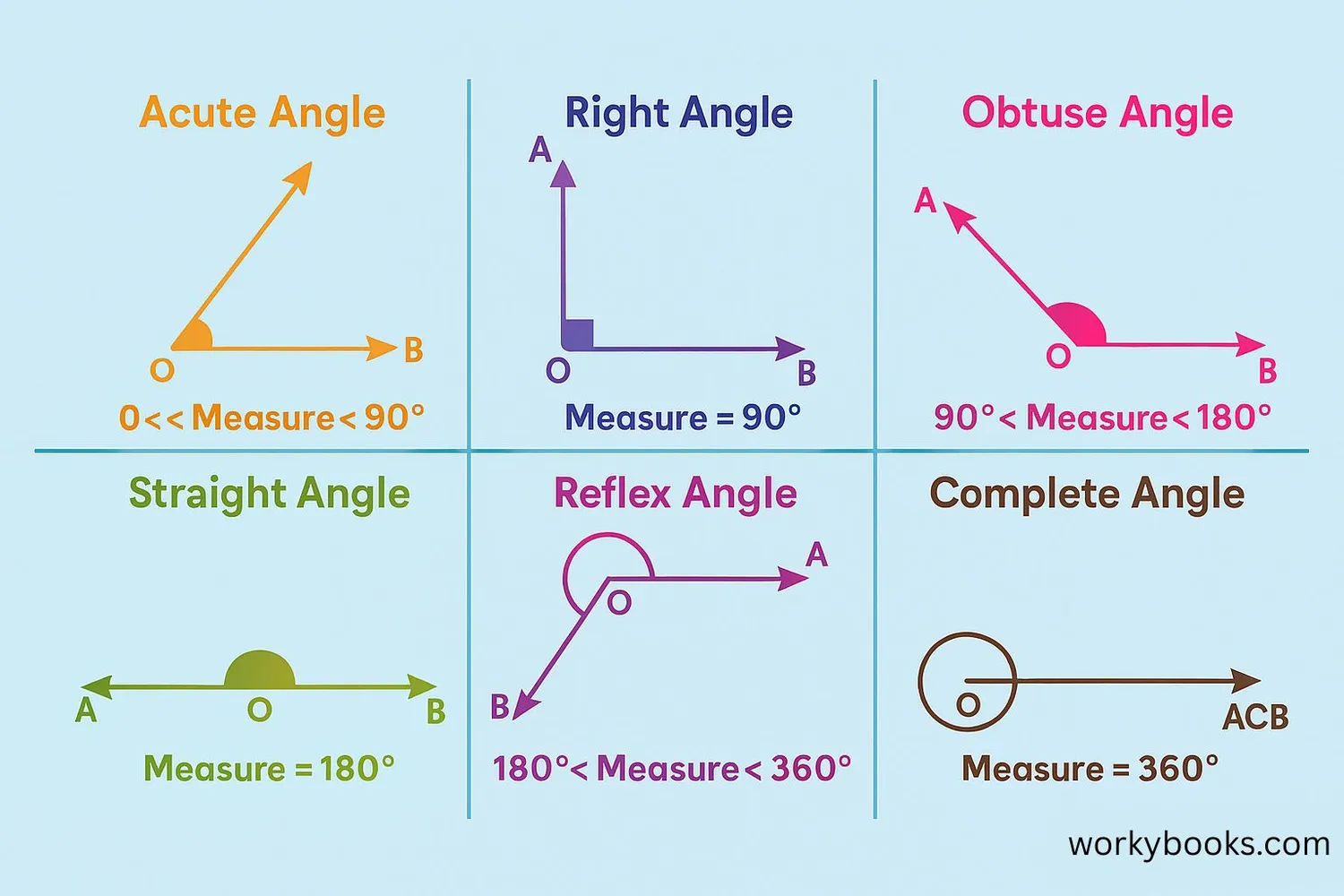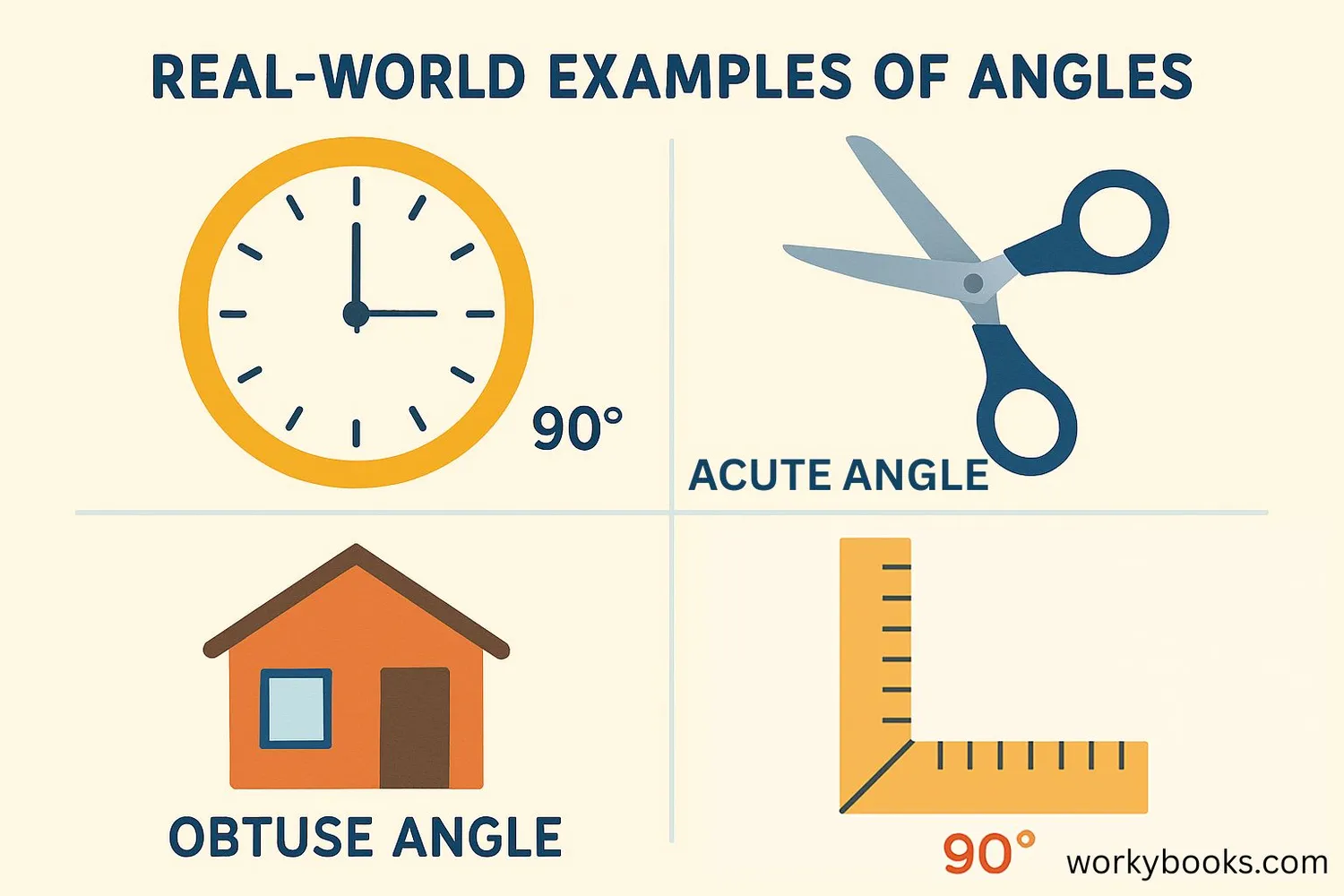Degree Angle Measure - Definition, Examples, Quiz, FAQ, Trivia
Learn to measure and classify angles with easy explanations and interactive activities
What is an Angle?

An angle is formed when two straight lines or rays meet at a common point called the vertex. The space between these two rays is what we call the angle. Angles are measured in units called degrees (°), which tell us how wide the angle opens.
Think of angles like slices of pizza. A small slice makes a small angle, while a big slice makes a large angle. The symbol for an angle looks like this: ∠ABC, where B is the vertex.
Angles are everywhere in our world! You can find angles in the corners of your room, in the hands of a clock, and even in the shape of a slice of pie.
Key Concept
An angle is formed by two rays that share a common endpoint called the vertex. Angles are measured in degrees.
How to Measure Angles

We use a special tool called a protractor to measure angles. A protractor is a semi-circular tool with markings from 0° to 180°.
Here's how to measure an angle:
- Place the center of the protractor (the midpoint of the straight edge) at the vertex of the angle.
- Align one ray of the angle with the 0° line on the protractor.
- Look where the other ray crosses the protractor's curved scale.
- Read the number where the second ray crosses the scale - this is the angle measurement in degrees.
Remember: Angles are always measured from the 0° line, and we read the number that corresponds to the direction the angle is opening.
Remember
The most important step is to align the vertex with the center of the protractor and one ray with the 0° line.
Types of Angles

Angles are classified into different types based on their measurement in degrees:
Acute Angle
Less than 90°
Right Angle
Exactly 90°
Obtuse Angle
Between 90° and 180°
Straight Angle
Exactly 180°
Reflex Angle
Between 180° and 360°
Remember
Right angles have a special symbol - a small square in the corner of the angle.
Real-World Angle Examples

Angles are all around us! Here are some common examples:
Right angles (90°):
- Corners of books and papers
- Where walls meet the floor
- A clock at 3:00 or 9:00
- Slice of pizza
- Open pair of scissors
- Hands of a clock at 2:00
- Roof of a house
- Open umbrella
- Hands of a clock at 4:00
- A straight line
- A ruler laid flat
- A clock at 6:00
Activity
Look around your room and find examples of each type of angle. Draw them in your notebook and label them.
Angle Measurement Quiz
Test your angle knowledge with this 5-question quiz. Choose the correct answer for each question.
Frequently Asked Questions
Here are answers to common questions about angle measurement:
Geometry Trivia
Discover interesting facts about angles and geometry:
Ancient Angle Measurement
The ancient Egyptians used a primitive form of angle measurement to build the pyramids. They created a tool called a "merkhet" to measure angles using the stars.
Nature's Angles
Honeybees build their honeycombs with perfect 120-degree angles, creating the strongest possible structure with the least amount of wax.
Angles in Space
Astronomers use angles to measure distances in space. The distance from Earth to stars is measured using an angle called "parallax," which is the apparent shift in a star's position.
Most Accurate Right Angle
The Great Pyramid of Giza has corners that form nearly perfect right angles. The average deviation is less than 0.05 degrees - an incredible achievement for ancient builders!





